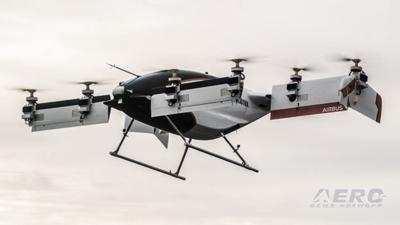So States Indian Civil Aviation Secretary
The creation of an electric Vertical Take-off and Landing (eVTOL) ecosystem in India aligns with the Indian government’s Ude Desh ka Aam Naagrik (UDAN) (Hindi: Let the common citizens of the country fly) initiative—a regional airport development program undertaken for purpose of upgrading under-serviced air routes and improving the Indian population’s access to air transportation. The UDAN initiative is part of the Indian government’s Regional Connectivity Scheme (RCS).

On Monday, 27 March 2023, Indian Civil Aviation Secretary Rajiv Bansal stated: “What are we doing in the UDAN scheme? We have identified some 1,200 routes and a whole lot of unserved and underserved airports to bridge the [air connectivity] gap at the Tier-II and Tier-III levels.”
Addressing a two-day international conference organized by India’s apex industry chamber CII on advanced and short-haul air mobility, Bansal posited eVTOLs may help boost air connectivity in not only densely populated Indian metropolitan areas, but in smaller communities as well.
Expressing regret that India’s vertical flight and general aviation sectors have not shared in the dramatic growth the country’s commercial airlines have enjoyed in recent years, Bansal set forth the possibilities offered by eVTOLs may, if properly nurtured, open an entirely new niche in the Indian air transport industry.
Mr. Bansal remarked: “The reason I believe this will happen is in the end, it’s all about one person, the consumer or passenger, who drives everything. The shortcomings of a helicopter or a conventional fixed-wing aircraft in requiring a runway or an ATC, those shortcomings will be bridged by devices such as eVTOLs that offer convenience for the consumer.”
Disclosing the Indian government’s plan to create a robust eVTOL ecosystem, Mr. Bansal requested the Indian and global aviation industries provide feedback vis-à-vis their respective expectations of India’s national and state governments. Bansal also requested vigorous deliberation on issues such as airspace management for manned and unmanned aircraft between the Airport Authority of India (AAI); the Directorate General of Civil Aviation (DGCA) which serves as India’s aviation safety regulator; and the Indian Ministry of Defense.

Mr. Bansal stressed: “These [issues] need to be charted to help us navigate the way forward.”
Bringing to light the fact that major manufacturers of conventional aircraft—e.g. Boeing, Airbus, Embraer, Bombardier, Textron, etc.—maintain negligible presence in India’s expansive civil aviation market, Bansal suggested global eVTOL manufacturers would profit from the establishment of production facilities in India—a nation with a vast workforce, considerable natural resources, and a regulatory environment that favors business.
“It would be a good idea to come closer to the markets which will provide you [eVTOL manufacturers] with growth opportunities as we move forward,” Mr. Bansal asserted.
Bansal intimated India’s Ministry of Civil aviation would presently consider commissioning an in-depth study by which to better understand use cases for eVTOLs, stating: “The eVTOL future is not as far as it seems; it’s much closer. We are in 2023 and by 2025 this would become a reality. India very much wants to be a part of this global initiative!”
 ANN's Daily Aero-Linx (05.02.24)
ANN's Daily Aero-Linx (05.02.24) ANN's Daily Aero-Term (05.02.24): Touchdown Zone Lighting
ANN's Daily Aero-Term (05.02.24): Touchdown Zone Lighting Aero-News: Quote of the Day (05.02.24)
Aero-News: Quote of the Day (05.02.24) ANN FAQ: Contributing To Aero-TV
ANN FAQ: Contributing To Aero-TV NTSB Final Report: Cirrus Design Corp SR20
NTSB Final Report: Cirrus Design Corp SR20




